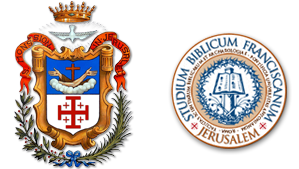...................................
[read in Italian] ![]()
The production of wooden models inspired by the sacred buildings of the Holy Land can be understood only by referring to pilgrimage tradition. Indeed, the birth of these models is tightly interwoven with two kinds of sources: itineraries written by Franciscans for worshippers and travel reports written by pilgrims. These models, executed following the descriptions found in these texts, represented the noble souvenir of someone’s visit. By providing the real dimensions and proportions of the buildings, Amico’s work allowed artisans to create correct scale copies of the architectures.
| [click sulle immagini per ingrandirle / click on images to enlarge] |
Amico himself encourages this use of his text, as shown by the following words about the aedicule of the Holy Sepulchre: «Reason as well as duty would have demanded that each piece of these venerable and holy places, drawn in perspective, should have according to the canons of architecture, each its own profile, but this I have omitted lest I make the volume too large. Yet every time the expert artificers will be able from the plans and the descriptions to comprehend the whole. But in this plan of the most Holy Sepulchre of Our Lord I have no wish to omit anything for the consolation of simple artificers, in order that if they wish to reproduce it with the permission of the authorities concerned, they may do so with every facility, availing themselves of the scale, which is given here in detail» (1620, fol. Gg1r and Plans, p. 110).
As a matter of fact, today there are about thirty models in olive wood and mother-of-pearl worldwide, which can be dated between the 17th and the 18th centuries and were manufactured by skilled Christian artisans especially in Bethlehem. These reproductions have very precise internal and external parts of the building, which, once back home, pilgrims were able to assemble in order to get a three-dimensional (though extremely idealized and “geometrized”) view of the entire structure. An outstanding example is the model owned by the Custody of the Holy Land, which will be exhibited in the museum dedicated to its history.
